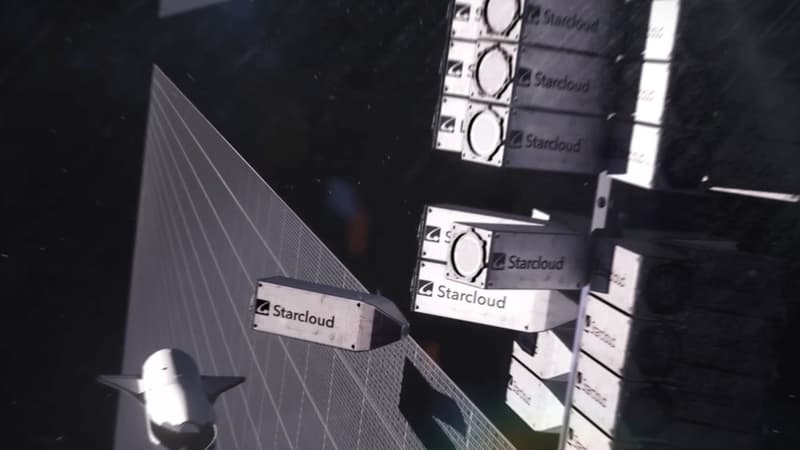Four kilometers on each side, two large wings joined together and formed by solar panels. In the center, the containers gathered in a star, in clusters, are the heart of a 5 Gigawatt data center, like no other. Starcloud is designed to float in space, in near-Earth orbit…
The startup behind this project emerged from Nvidia’s Inception program, which funds AI-related startups, and was also incubated in Google’s Cloud AI accelerator. Because Starcloud wants to be part of the answer to the growing needs of data centers and it will work thanks to AI.
Why put data centers in space?
Reduce ecological impact
For the same reason we throw them into the oceans. The objective is obviously to reduce the energy cost necessary for the operation and cooling of the components used in data processing. Space cold is a preferred ally. Solar panels are responsible for capturing sunlight and producing electricity. Therefore, it is not necessary to carry a battery or emergency generator, those responsible for the project estimate.
“In space, you have access to almost unlimited, low-cost renewable energy,” Philip Johnston explained to the Nvidia blog. For the former NASA service provider, “the only environmental cost will be that of the launch.” It even estimates that its data centers could be 10 times more economical in terms of energy consumption and have a carbon footprint ten times smaller than a terrestrial data center.
Uses for today, a solution for tomorrow
Philip Johnston is convinced that “within ten years almost all new data centers will be built in space.” Finally, if this project is successful as Nvidia and Starcloud seem to expect. The first module should be launched into orbit next November. A first step that takes on a modest appearance. In fact, the Starcloud-1 satellite is the size of a small refrigerator and will weigh about 60 kg. Inside, Starcloud engineers placed Nvidia’s H100 chips, Hopper architecture.
Initially, the Starcloud founder will use his center to analyze Earth observation data. As a start-up incubated by Google, the young company has demonstrated that it is capable of running AI models on these machines, and that the latest generations of LLM will work on its first modules.
Thus, it would be possible to make faster and more accurate weather predictions by processing the data collected directly in space, before sending the conclusions to Earth.
Surveillance systems that combine cameras, hyperspectral imaging sensors and synthetic aperture radars (to obtain 2D or 3D reconstructions of an environment) generate enormous amounts of data, up to 10 GB/s, says Philip Johnston. Used in monitoring crops or even forests, these methods make it possible to detect problems, such as gigantic fires.
However, having computing power in space could guarantee a significant gain in speed in information processing and map creation, considers the project director. Detection of phenomena could be faster, reducing reaction times from a few hours to a few minutes.
While space cold will obviously be an ally in cooling these data centers, this environment is still hostile and potentially exposed to space debris or solar radiation that does not mix well with computer chips.
So many considerations for Starcloud engineers to take into account, who are already thinking about what comes next. The next modules sent to space will feature Nvidia Blackwell generation chips, which will offer up to ten times more computing power. There will remain the issue of recovering broken or obsolete modules, which will be much more difficult than in terrestrial data centers.
Source: BFM TV


